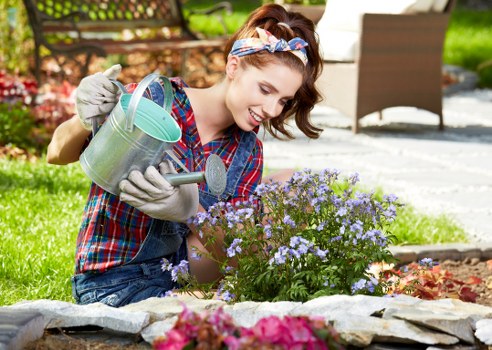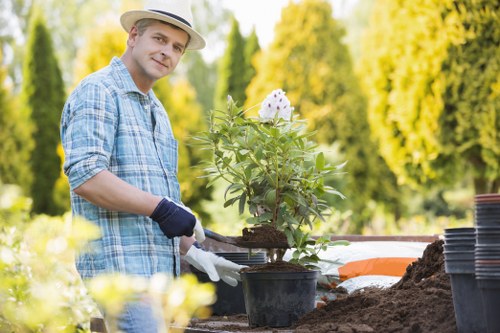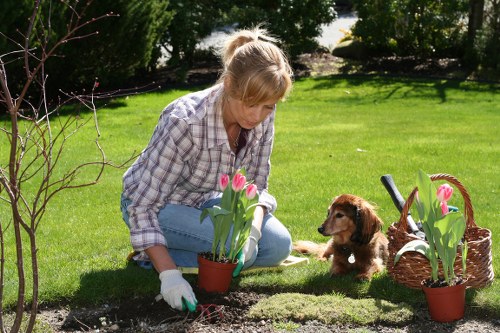Enhancing Your Garden: Landscaping Tips for Fence Replacement
Introduction to Garden Fence Replacement

Replacing your garden fence is not just about upgrading your property's security; it's also an excellent opportunity to enhance your landscape's overall aesthetics. A well-chosen fence can complement your garden's design, providing both functionality and beauty.
When considering a fence replacement, it's essential to evaluate the existing landscape and how new fencing can improve the space. Thoughtful landscaping combined with the right fence can transform your garden into a more inviting and cohesive environment.
In this article, we'll explore various aspects of landscaping in garden fence replacement, offering tips and ideas to help you make informed decisions that elevate your outdoor space.
Choosing the Right Fence Material

The material of your fence plays a significant role in both its appearance and durability. Common materials include wood, vinyl, metal, and composite options. Each material offers unique benefits that can complement different landscaping styles.
Wood fences provide a natural and traditional look, making them versatile for various garden themes. They can be customized with different stains and paints to match your landscape's color palette.
Vinyl fences, on the other hand, require less maintenance and are available in a range of styles that mimic wood or metal. They are ideal for homeowners seeking a durable yet low-maintenance option.
Integrating Plantings with Your Fence

Integrating plantings with your fence can create a seamless transition between the barrier and the natural elements of your garden. Climbing plants, such as ivy or roses, can adorn fence panels, adding texture and color.
Alternatively, you can use the fence as a backdrop for taller plants and shrubs, creating layers and depth in your garden design. This approach not only enhances the visual appeal but also provides additional privacy and wind protection.
Consider the growth patterns and maintenance needs of the plants you choose to ensure they complement rather than overpower your fence.
Design Elements to Consider

- Color Coordination: Select fence colors that harmonize with your garden's color scheme.
- Height and Scale: Ensure the fence height suits your privacy needs and complements the size of your garden.
- Style Consistency: Maintain a consistent style between your fence and other architectural elements.
Incorporating these design elements will create a cohesive and attractive outdoor space that reflects your personal style.
Maintenance Tips for Longevity

Proper maintenance is crucial for extending the life of your fence and preserving its appearance. Regular inspections can help identify and address issues such as loose boards, rust, or paint peeling.
For wooden fences, periodic staining or painting can protect against weather damage and insect infestation. Vinyl and metal fences require less maintenance but should still be cleaned regularly to prevent grime buildup.
By keeping up with maintenance tasks, you ensure that your fence remains a beautiful and functional part of your garden for years to come.
Enhancing Privacy and Security
A well-planned fence not only beautifies your garden but also provides privacy and security. Landscaping around the fence with dense plantings or decorative features can enhance these benefits while adding charm to your outdoor space.
Consider installing features like trellises, which can support climbing plants and add vertical interest. Additionally, incorporating lighting along the fence can improve security and create a welcoming atmosphere during evening hours.
Balancing privacy needs with aesthetic considerations results in a garden that is both safe and visually appealing.
Eco-Friendly Landscaping Options
Opting for eco-friendly materials and practices in your fence replacement project can contribute to sustainability and reduce your environmental footprint.
Materials such as recycled composite or sustainably sourced wood are excellent choices for environmentally conscious homeowners. Additionally, integrating native plants into your landscaping supports local ecosystems and requires less water and maintenance.
Embracing eco-friendly options not only benefits the planet but also enhances the natural beauty of your garden.
Final Thoughts
Landscaping plays a pivotal role in garden fence replacement, influencing both the functionality and aesthetic appeal of your outdoor space. By carefully selecting materials, integrating plantings, and considering design elements, you can create a harmonious and beautiful garden that stands the test of time.
Remember to maintain your fence regularly and explore eco-friendly options to ensure your garden remains a source of pride and enjoyment.
Ready to transform your garden with a stunning fence replacement? Contact us today to get started!